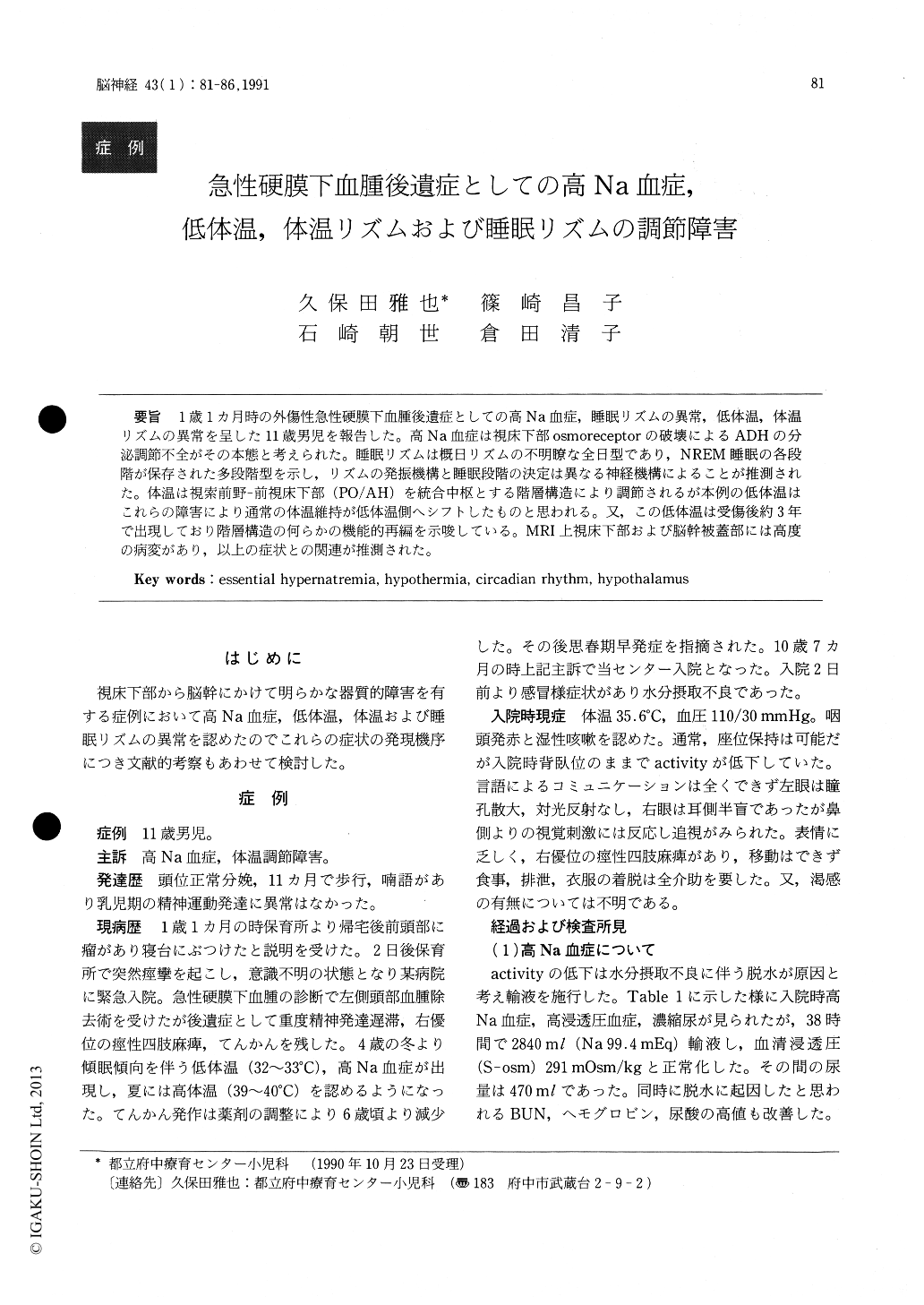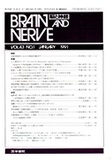Japanese
English
- 有料閲覧
- Abstract 文献概要
- 1ページ目 Look Inside
1歳1ヵ月時の外傷性急性硬膜下血腫後遺症としての高Na血症,睡眠リズムの異常,低体温,体温リズムの異常を呈した11歳男児を報告した。高Na血症は視床下部osmoreceptorの破壊によるADHの分泌調節不全がその本態と考えられた。睡眠リズムは概日リズムの不明瞭な全日型であり,NREM睡眠の各段階が保存された多段階型を示し,リズムの発振機構と睡眠段階の決定は異なる神経機構によることが推測された。体温は視索前野一前視床下部(PO/AH)を統合中枢とする階層構造により調節されるが本例の低体温はこれらの障害により通常の体温維持が低体温側へシフトしたものと思われる。又,この低体温は受傷後約3年で出現しており階層構造の何らかの機能的再編を示唆している。MRI上視床下部および脳幹被蓋部には高度の病変があり,以上の症状との関連が推測された。
We reported an 11-year-old boy who suffered from transient hypernatremia, hypothermia, and circadian rhythm disturbances of sleep-wakefulness and body temperature from the age of 4 years, as sequelae of acute subdural hematoma. T1-weighted magnetic resonance imagings (MRI) of the brain revealed low intensity consistent with necrotic change in the whole left cerebral hemisphere, hypothalamic region, and the right-sided brain stem including tegmentum, while the pituitary structure was well preserved. Anterior pituitary function was almost normal. ADH (antidiuretic hormone) was neither stimulated by hyperosmolality nor suppres-sed by hyposmolality but continued to be secreted at almost constant level approximating the nor-mal basal state. This pattern seemed to be due to complete destruction of the osmoreceptor located in the anterior hypothalamus.
He exhibited a dispersed-type sleep with differ-entiated stages of NREM (non-rapid eye move-ment), although the percentage of sleep was higher at night than in the daytime. It is suggested that circadian rhythm of sleep-wakefulness and differen-tiation of NREM sleep stages are regulated by different neuromechanisms. Brain stem lesion on MRI may be connected with the pathogenesis of the dispersed-type sleep with special respect to ampli-tude reduction of sleep-waking circadian rhythm.
Circadian rhythm of body temperature (BT) was irregular in amplitude, phase, and period without synchronization with sleep-wakefulness rhythm. Hypothermia was also demonstrated at the basal state, while BT increased when he suffered from respiratory infection. It is likely that hypothermia in our case is caused by the BT shift to the lower side due to malfunction of BT integrating system including preoptic area and anterior hypothalamus.
Although there is only limited information, the present study suggests that, in the human, as in laboratory animals, hypothalamus and midbrain structures are involved in the generation of cir-cadian rhythms.

Copyright © 1991, Igaku-Shoin Ltd. All rights reserved.


